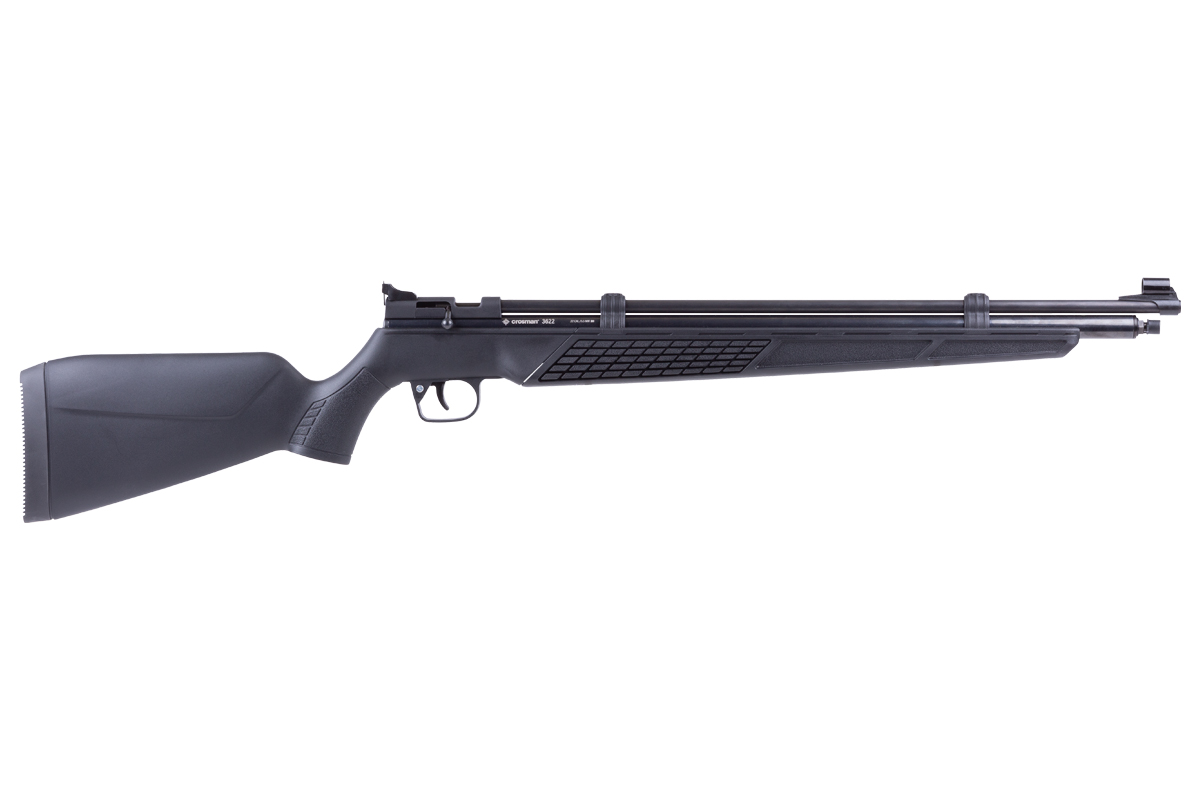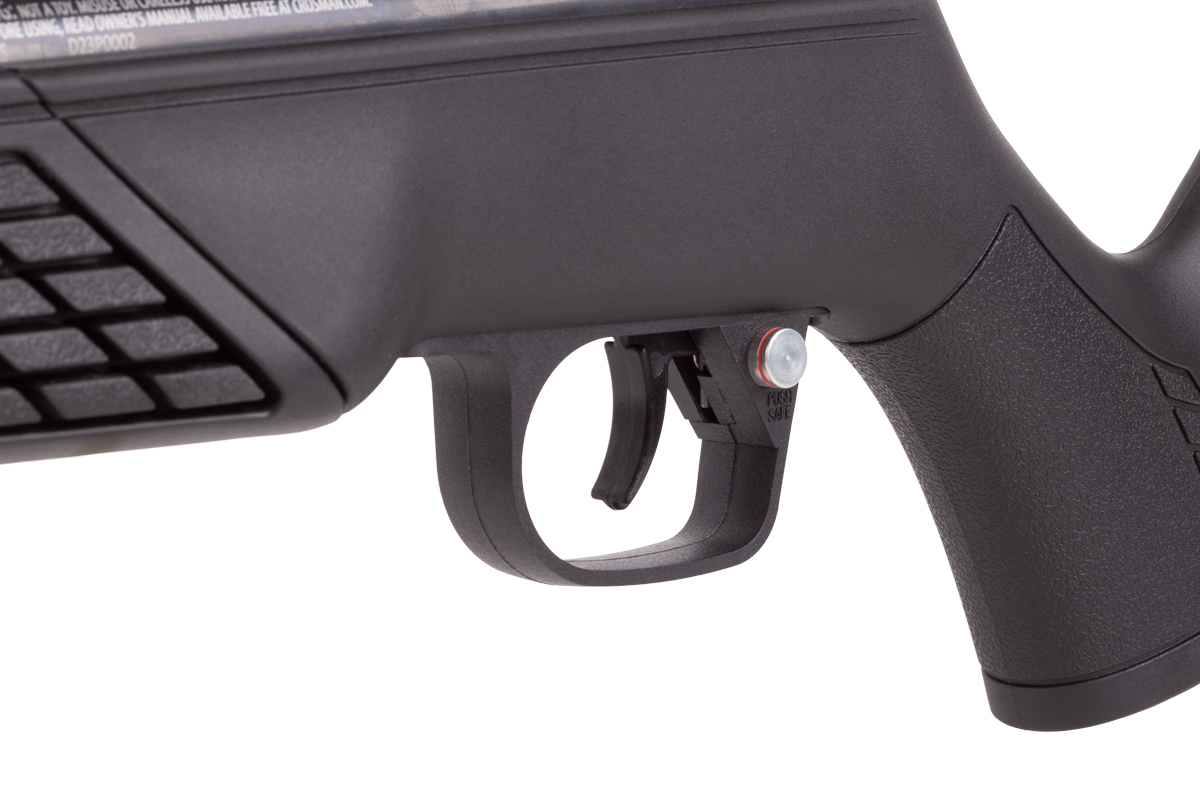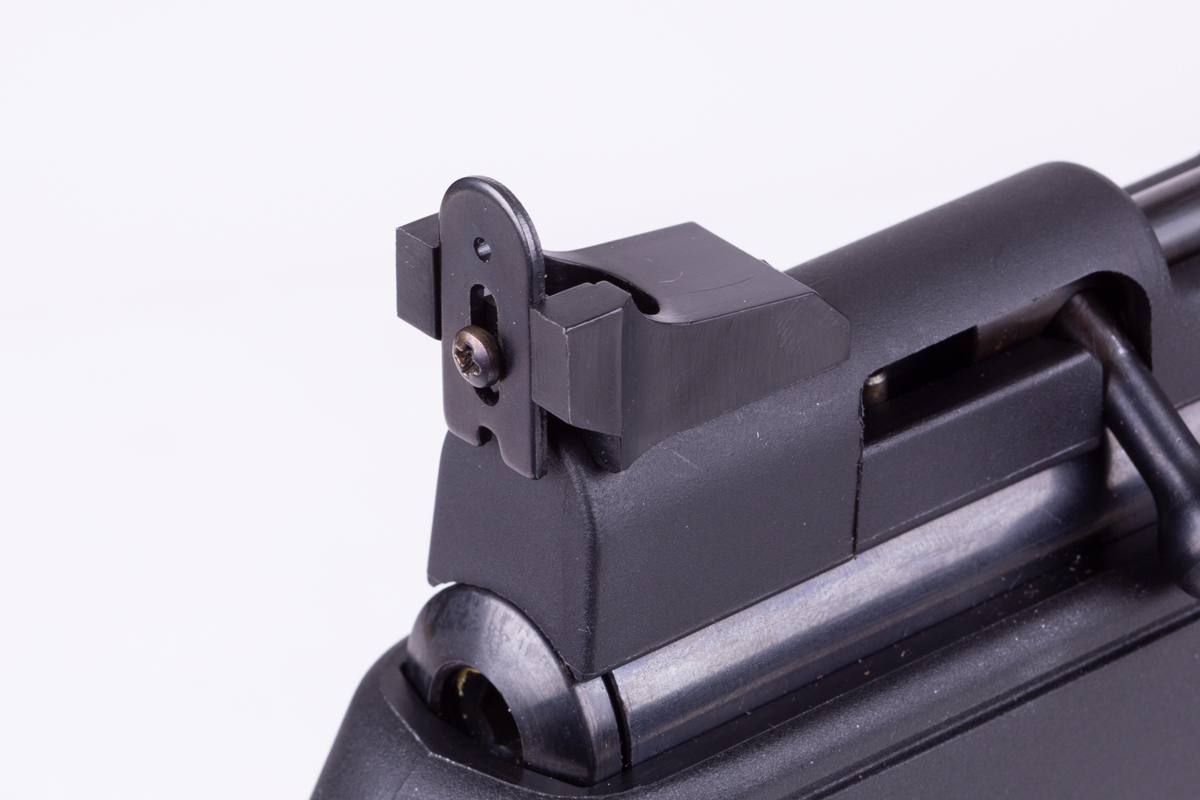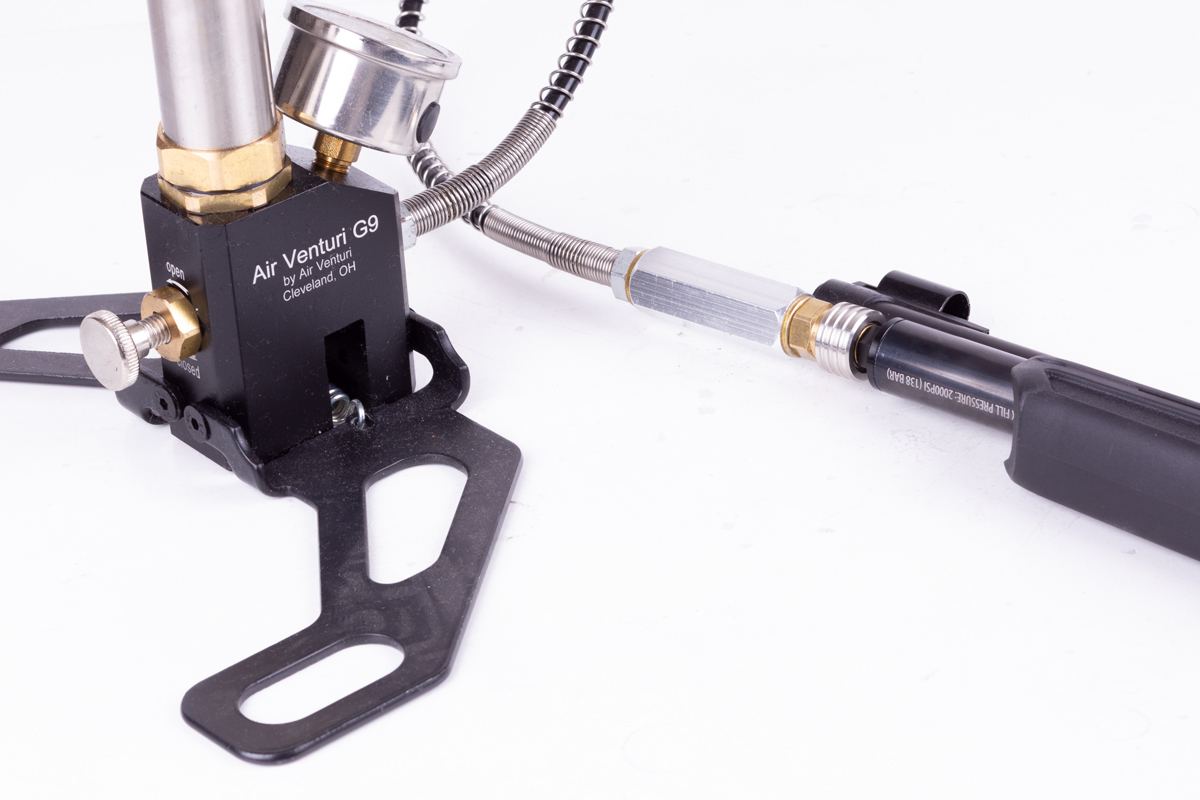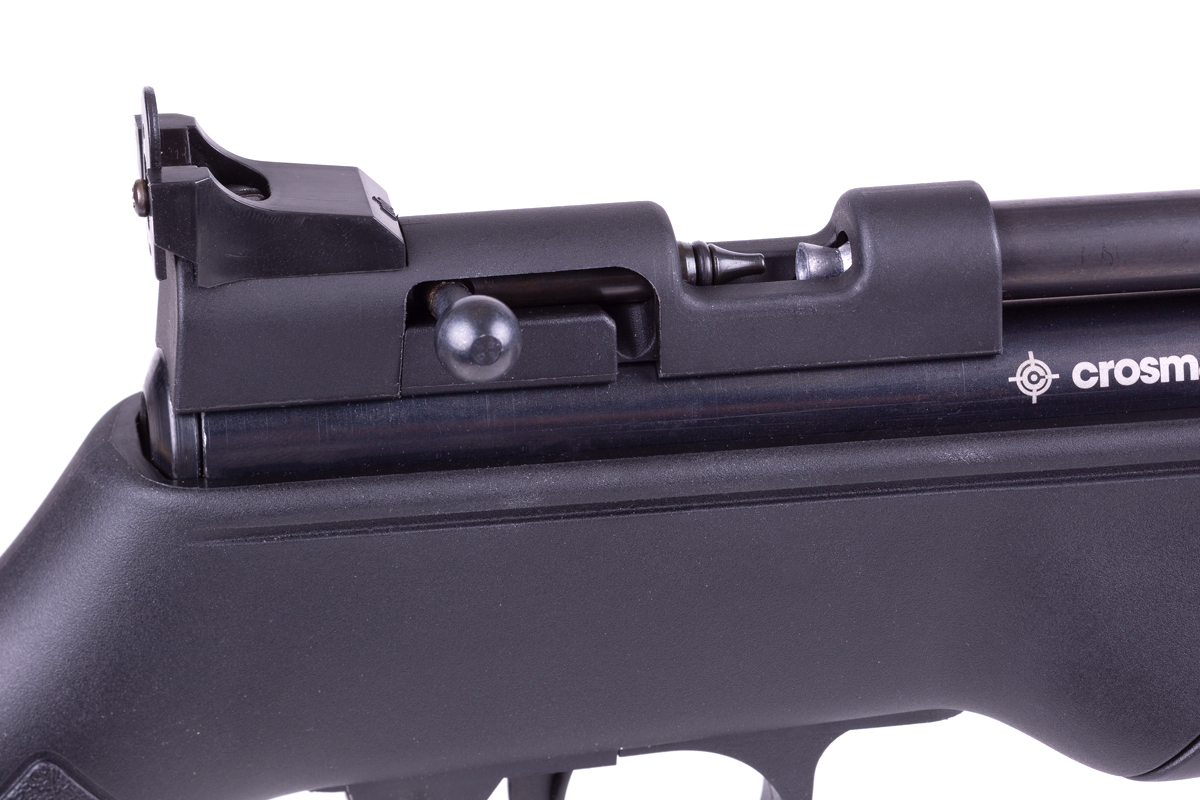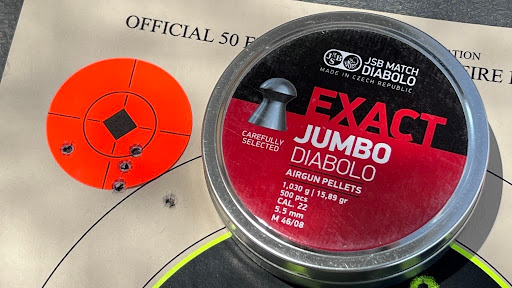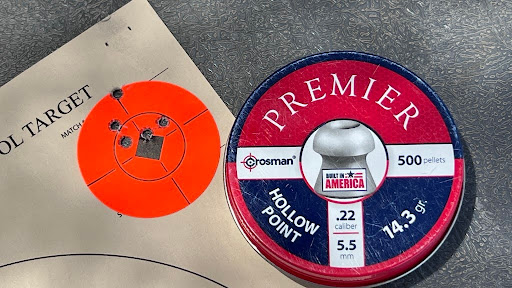Definitive Guide to Crosman 3622
The Crosman 3622 PCP air rifle features an ambidextrous, all-weather synthetic stock, which seems geared toward those with smaller frames. We wouldn't specifically call it a "youth" gun, but it's probably better suited for your average youngster than a full-grown adult.
The 3622 is designed for only open-sight shooting as the receiver does not have any way to mount an optic. It may be possible to swap out the plastic breach for the steel breach used on the 2240, but we have not tested it for compatibility.
The rifled steel barrel is 21.55 inches long and features a hooded front ramp site. The rear sight is plastic and has a plate that can be used in a notch or peep configuration. It is located at the rear of the receiver. The base of the sight is adjustable for windage, and the rear plate, connected to the plastic sight, is adjustable for elevation. Individual flat-head screws are used to secure the sight assembly and rear sight plate. They don't click to adjust but rather simply loosen, allowing the shooter to move the sight as needed and then tighten down the screws. It's easy to over-tighten the rear elevation adjustment screw in the plastic sight base, so be careful when making adjustments. If you strip the screw, you won't be able to maintain proper sight alignment.
The Crosman 3622 pellet rifle uses a simple single-shot bolt action identical to that found on many of Crosman's CO2 airguns, such as the standard 2240, the 1322, the 1377, and the list goes on. It's a tried-and-true design, and if it's not broken, there's no need to try to fix it.
The trigger seems identical to that found on the Benjamin Discovery and many other Crosman / Benjamin airguns. It has a plastic trigger blade with a cross-bolt safety. It's not adjustable, and it has a trigger pull that comes in around 3 +/- pounds. It's predictable and works fine, but don't expect "match grade" trigger performance from the 3622. Remember, this gun sits at the most entry-level point for PCP airguns.
There is a steel air cylinder that runs under the barrel. It's relatively small and designed to use 2000 psi vs. the more common 3000 psi fill pressure. This gives shooters starting on a tight budget a distinct advantage if they need or want to fill their PCPs with a hand pump. Be mindful of the pressure gauge on your pump or bottle when hand pumping or filling, as the 3622 does not have an integrated pressure gauge.
Lastly, The overall length is 35.63 inches, and the weight is only 3.9 pounds. The Crosman 3622 PCP rifle is your basic, mostly synthetic, fully functional, and adequately equipped airgun.
Setup & Operation
There is not a lot to the setup here since we don't have to choose and mount an optic. However, you will need to adjust your open sights. The manual is pretty good and gives instructions on the process. In short, you want to move the sights in the direction you need to move your point of impact. When sighting, start at 10 yards, take three or four shots, and then move the group as needed. Don't chase one shot at a time. Once you are sighted in, you'll be good to go. But before you start sighting things in, we should cover filling and operation. Let's do that now.
Like with any PCP airgun, you need to fill the air reservoir with high-pressure air before you can start shooting. Because the air cylinder is small and only requires 2000 PSI for optimal operation, we recommend using a simple hand pump like the Air Venturi G6 to get started.
The pump ships with a foster quick disconnect fitting, which is compatible with the fill port on the 3622. Connect the pump's fill hose to the rifle, close the bleed valve, and start pumping. The general rule of thumb is about 10 pumps per 100 PSI. Obviously, this will change depending on the pump and cylinder size. So, if we need 2000 psi, you can expect to put in about 200 strokes to fill the gun. The closer you get to 2000 PSI, the more difficult it will be, but it won't be anything like trying to fill to 3000 PSI or 4350 PSI. Take your time and go slow so that you don't overheat the pump.
Once you are topped off, you are ready to load and shoot your rifle. Make sure that the safety is on. Pull the bolt rearward to cock the rifle and then load a pellet in the breech. Now close and lock the bolt. Release the safety, acquire your target, and gently squeeze the trigger. Repeat the cocking, loading, and shooting part to take your next shot. The air cylinder will continue to provide power for each shot until you need to refill it. Now, let's talk about shot count, performance, and accuracy.
Performance & Accuracy
Because the 3622 does not have a gauge, you'll need to pay close attention to your shot count to make sure that your pressure does not drop too low. We found that our 3622 could easily get between 25 and 30 shots per fill with reasonable consistency. In fact, we were very impressed with how well the gun performed being unregulated and this affordable.
Here are our performance results using JSB 15.89 grain pellets and Crosman Premier Hollow Point 14.3 grain pellets.
We saw a consistent curve with each shot string, with our starting and ending velocities within a few FPS of each other. Crosman has done a great job here.
The Crosman Premier Hollow Points were the more accurate pellets. We shot five-shot groups at 15 yards with the open sights setup in the peep sight configuration. After all our testing, it may be worth trying to find even lighter pellets, perhaps something like the JSB GTO lead-free pellets, as the lighter pellets certainly shot better than the heavier pellets.
JSB 15.89 Grain Pellets - 5 shots at 15 Yards
Crosman Premier Hollow Point Pellets 14.3 Grains - 5 shots at 15 Yards
Summing Up
Our job isn't really to deliver opinions here with our guides but rather to share the facts and relevant data about the product, its operation, performance, and general use. But we think it's important to put this guide into some context. If this were a $400 airgun or even a $250 airgun, then we'd probably be a little critical about it. But the fact is that the Crosman 3622 PCP pellet gun is a $150 PCP that, while it makes a lot of compromises to hit that price point, still delivers consistent performance and accuracy. It likes the affordable, readily available pellets and is easy to fill and operate. It's just a great airgun for those who want to start somewhere on a tight budget.


